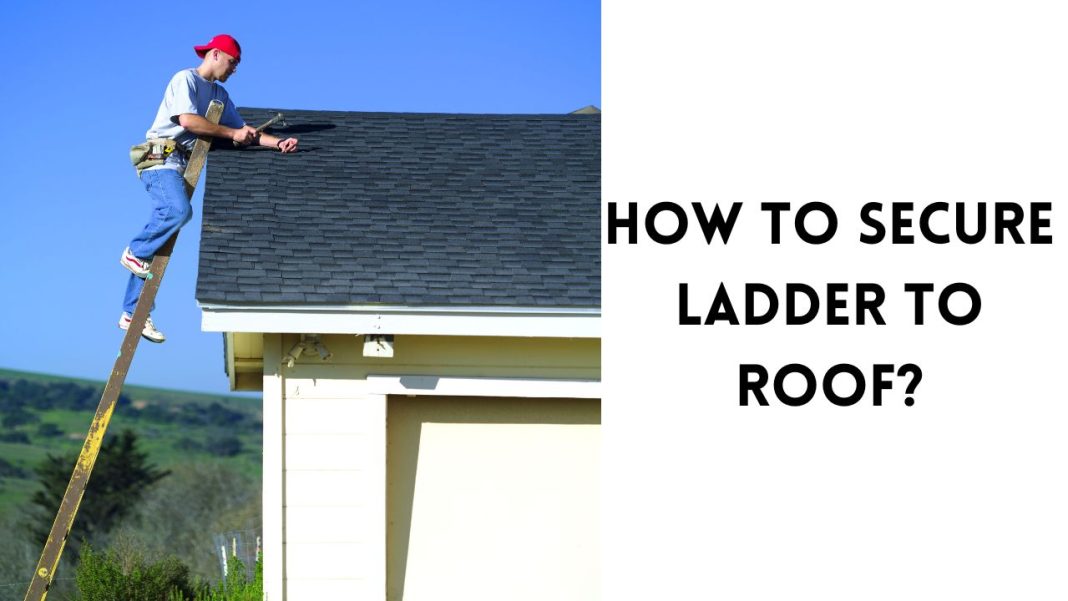Climbing a ladder to your roof can be dangerous if not done correctly. The most important step is ensuring that the ladder is securely attached to the roof. To ensure safety, it is essential to understand the best practices for securing a ladder to your roof. This blog post will discuss the different methods for safely and securely attaching a ladder to your roof.
Choosing the right ladder
When looking for a ladder to secure your roof, there are a few things to consider. First and foremost, you must ensure that the ladder is tall enough to safely and securely reach your roof. When measuring the ladder’s height, make sure it is at least two feet taller than the height of the roof. It’s also important to check that the ladder is in good condition and free from any damage or wear and tear. Make sure all the rungs are secure and that the rails are sturdy.
Additionally, it would help if you inspected the ladder for any gaps or cracks that may make it weak or vulnerable. Finally, pay close attention to the weight limit and be sure that it can hold your body weight and any tools and supplies you will need to complete the job. Fathom safety is key when selecting the right ladder for your roof.
Preparing the roof
Before you start securing the ladder, you need to ensure that the roof is in a safe condition and ready to hold the ladder. You should inspect the roof for structural damage, loose shingles, or rot, as any of these could mean that the ladder is not secure when you put it into place. If you need clarification on the roof’s condition, contact a professional to help you assess it.
Once you are confident that the roof is in good condition, you can begin preparing it for the ladder. Start by measuring the area where you plan to place the ladder. This will give you an idea of how far away from the edge it needs to be and how much weight it can hold. Once you have determined these measurements, mark the area with chalk to keep track of your measurements.
Next, ensure that the area is clear of any debris or objects that could interfere with the ladder or cause a safety hazard. Pay particular attention to nails or screws sticking out of the roof, as these can easily snag the ladder and cause an accident. Finally, check the area for any weak spots and ensure there are no gaps or holes where someone could lose their footing. When you have finished preparing the roof, it’s time to fathom safety and secure the ladder.
Securing the ladder
Once you’ve chosen the right ladder for the job and prepared the roof, it’s time to secure it to ensure your fathom safety.
The first step is to have someone firmly hold the ladder’s base while you climb up. Make sure they also keep an eye on the ladder as you climb up and adjust it if necessary.
Once you reach the top of the ladder, find something sturdy enough to tie the top of the ladder to, like a structural beam or wall stud. To ensure it’s secure, use a heavy-duty rope, such as a climbing rope, to tie the ladder to the beam or wall stud. Make sure to tie multiple knots so the rope won’t slip off.
Once the top of the ladder is secured, you can begin securing the bottom. This will require another person to hold the ladder while you secure it. Use bolts or lag screws to secure the ladder to the roof at the bottom. Make sure you use heavy-duty bolts long enough to go through the roof and ladder rungs.
Once all bolts and lag screws are in place, double-check that everything is secure. You should also take a few extra steps to ensure your fathom safety. Add non-skid material on top of the roof and rungs of the ladder. This will help prevent slipping and sliding when using the ladder. Also, consider investing in a safety harness and anchoring system that can be used to keep you secure while working on the roof.
Testing the security of the ladder
Once your ladder is in place, you must ensure it is secure. This is important for both safety and stability. To ensure that your ladder is properly secured to the roof, do the following:
- Make sure the ladder does not move when you shake or pull on it. You need to add more anchoring materials if it moves to ensure it stays in place.
- Test the ladder’s weight capacity by having someone stand on it to fathom its safety. It may need additional reinforcement if it wobbles or moves under the weight.
- If the ladder is used to access an upper level of the home, test it by climbing up and down. Make sure the ladder is stable and doesn’t wobble as you ascend and descend.
By securing and testing your ladder properly, you can ensure that it will provide safe access to your roof without fail.
Final Thoughts
Securing your ladder to the roof is essential in completing any roofing project. By following the steps outlined above, you can be sure that your ladder is secure and safe. However, it is important to remember that safety should never be taken for granted, and you should always be cautious when working at heights. Fathom safety measures when dealing with ladders and other equipment, and use common sense when completing tasks on the roof. With some preparation, planning, and the right tools, you can ensure that your ladder is securely attached to the roof so that you can work safely and confidently.

